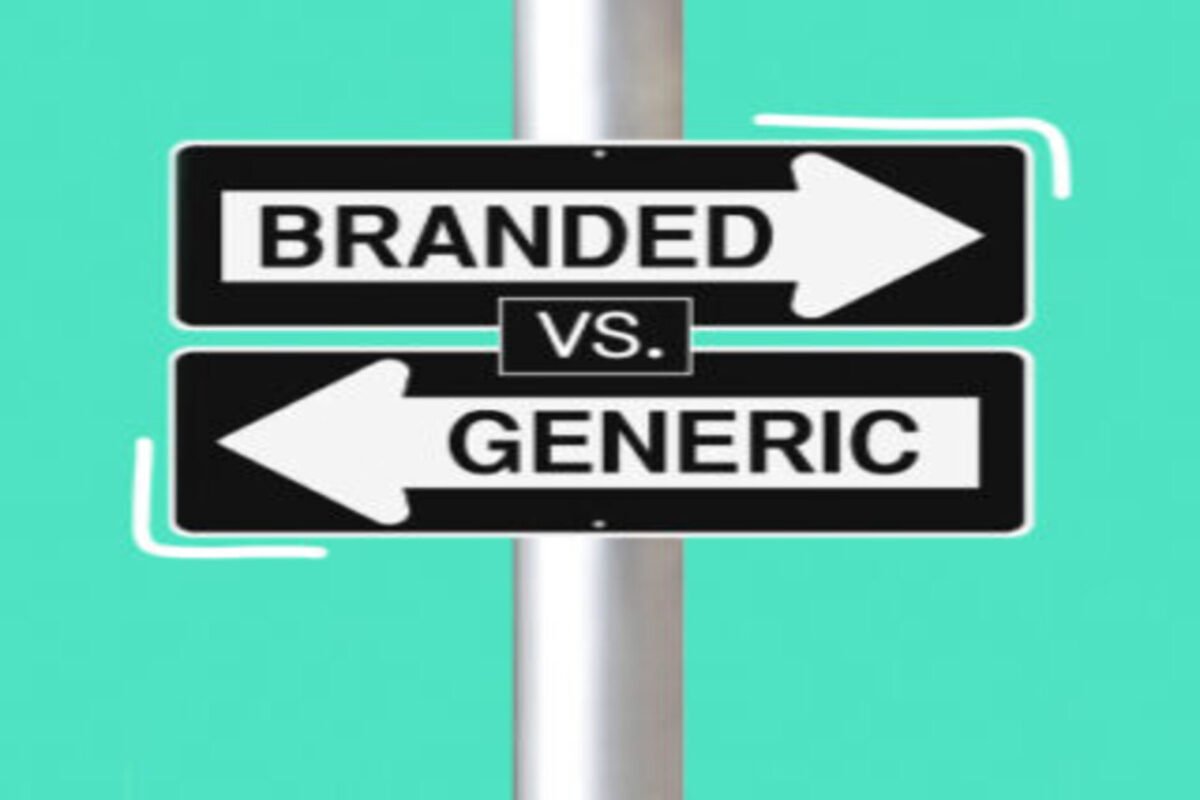
Is it becoming generic to “Brand” the branded!
A hotly debated topic today is on branded vs generic drugs. Cost is the driving force behind this debate. Medical professionals find themselves caught in the middle of as they traditionally prescribe medications. The views expressed here are of a medical professional and not necessarily from an economic or scientific perspective.
What is “original” and “generic”?
Without ongoing innovation and research, there would be no new medicine available and indeed, no progress in the field of medicine or any other field for that matter. Pharmaceutical companies spend substantial amounts of money, time and manpower to discover a new molecule, formulate a drug, subject it to systematic laboratory and clinical testing before regulatory approvals are granted and the finished product released in the market for use. It should be more appropriately termed “innovator”, “research” or “original” drug but is wrongly labeled as “branded” instead. The drug is sold in the market at a price that recovers these costs and makes a profit for the company.
Once the patent period is over, other companies can use the molecule to formulate their version of the drug, which is labeled as “generic”. This product has to demonstrate the concentration of the active molecule within a certain range and non-inferiority compared to the innovator drug. The cost involved is obviously much lower as there is no research or extensive clinical trials involved. The drug resembles but is not identical to the original as the manufacturing process and the excipients (other carrier compounds that may affect rate of release and absorption of the active molecule) remain unique to the innovator. This implies that since the rate, site and extent of absorption of a generic drug may be variable, the efficacy and side-effects could be different compared to that for the innovator drug.
Where do generic drugs have a role?
Since most if not all new drugs are being launched by international pharmaceutical companies, some may be priced very high and be out of reach of the average Indian consumer. In this situation, where the alternative is not taking the medication at all, generic drugs offer an affordable solution. This was aptly demonstrated in the case of a liver cancer treatment drug called Sorafenib, where generics came to the rescue.
In the case of liver transplantation, immunosuppressive drugs play an integral part in preventing rejection of the transplanted liver. In India, generic drugs were available years before the original drug became available. Clinicians accumulated extensive experience with available generic drugs and were satisfied with their dosing, side effects and outcomes. Today, both generic as well as original drugs continue to be used in this situation.
What is policy on original vs generic?
To reduce variability in pricing and make essential medicines affordable, the government introduced drug pricing control which was amended in 2016. The consequences have been varied. Many pharmaceutical companies with original drugs reduced prices to stay in the market, hoping that increased volumes would compensate loss due to price reduction. Some companies chose to withdraw their product from the market citing lack of viability, leaving only generic drugs available. The negative aspect of this is that even if a patient could afford and wanted to take the original drug, they wouldn’t be able to do so.
How does a doctor choose a particular brand of a drug for a patient?
A guiding principle is to choose innovator drugs as far as possible over generic drugs, provided cost or price difference is not prohibitive. This ensures that drug efficacy, side effects and clinical outcomes are predictable. It is also important to encourage research so that the search for newer and better drugs is constantly ongoing. Today, there is a real risk of running out of essential drugs such as antibiotics for treating infections. If the original drug is priced out of reach of the patient, generic drugs manufactured by the top 4 or 5 companies that have a consistent reputation for good quality are chosen. Different generic brands are rotated so that there is no preferential prescription favoring any company. Writing the chemical name ensures that prescription errors are reduced to a minimum and the pharmacist can give an alternative if the particular brand is unavailable.
What is the way forward?
The prescribing option is best served in the hands of the treating doctor who is responsible and answerable to the patient and their families for the outcome. Patients entrust their doctors with the responsibility of relieving them of their ailments. Medicines are one of the important tools adopted by the doctor for treatment. Placing it in the hands of the hospital or pharmacist will worsen the problem as their interests will remain more commercial than in the interest of the patient.
A long-term solution is to encourage research and innovation in India itself so that we have newer molecules and drugs developed in-house. A medium term measure is to have tighter quality control mechanisms in place to ensure uniform and high quality of generic drugs. This will improve confidence levels in doctors to prescribe generic drugs for their patients.
Doctor-Patient Relationship
For those who thought that India was spared, think again!
The foundation of a good doctor-patient relationship is trust. That bond is forged during direct doctor-patient interactions, where the doctor not only pieces together the puzzle of symptoms and signs to establish a diagnosis and plan medical treatment but gets to understand the patient as a whole their worries, fears etc and help them come to terms with their illness and begin the process of healing. When the patient looks at the doctor’s eyes, body language, listens to the tone of their voice and modulation it speaks a language and conveys a message far more than just the word and begins to heal before medicines or surgery does.
With hospitals going paperless (corporate to begin with), doctors are being forced to spend significant time typing pages upon pages on slow, glitchy software. This far exceeds the time spent listening and interacting with the patient. Should we be relearning typing skills and being slaves to technology when technology should really be helping us provide better care? Why can’t we use software that enables voice be converted to text or written text to be scanned and stored as text. I know that all these and more are available as of yesterday! Why go into paperless technology half-heartedly and deprive patients of time spent with doctors and doctors of what they do best, patient-care?




